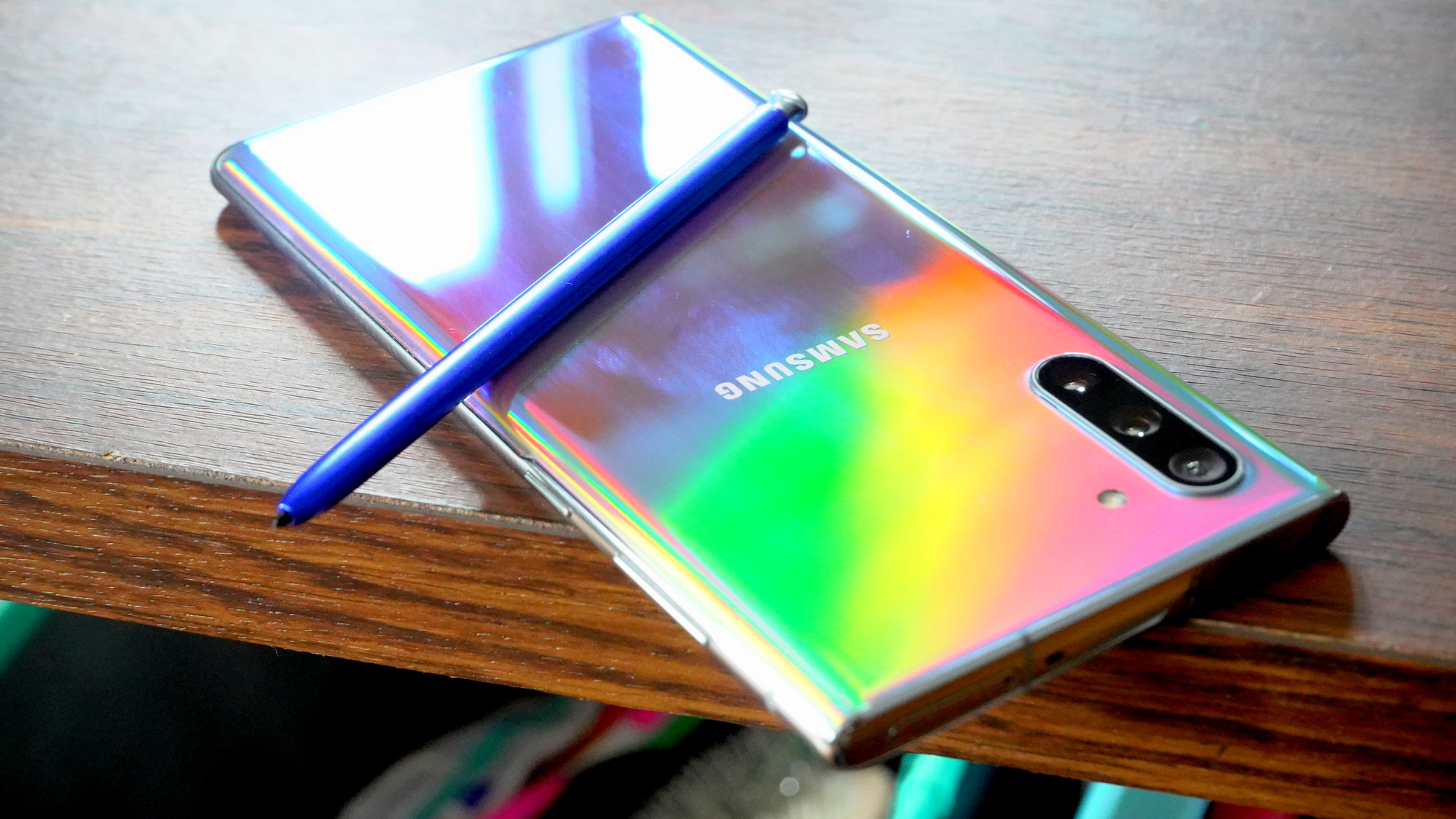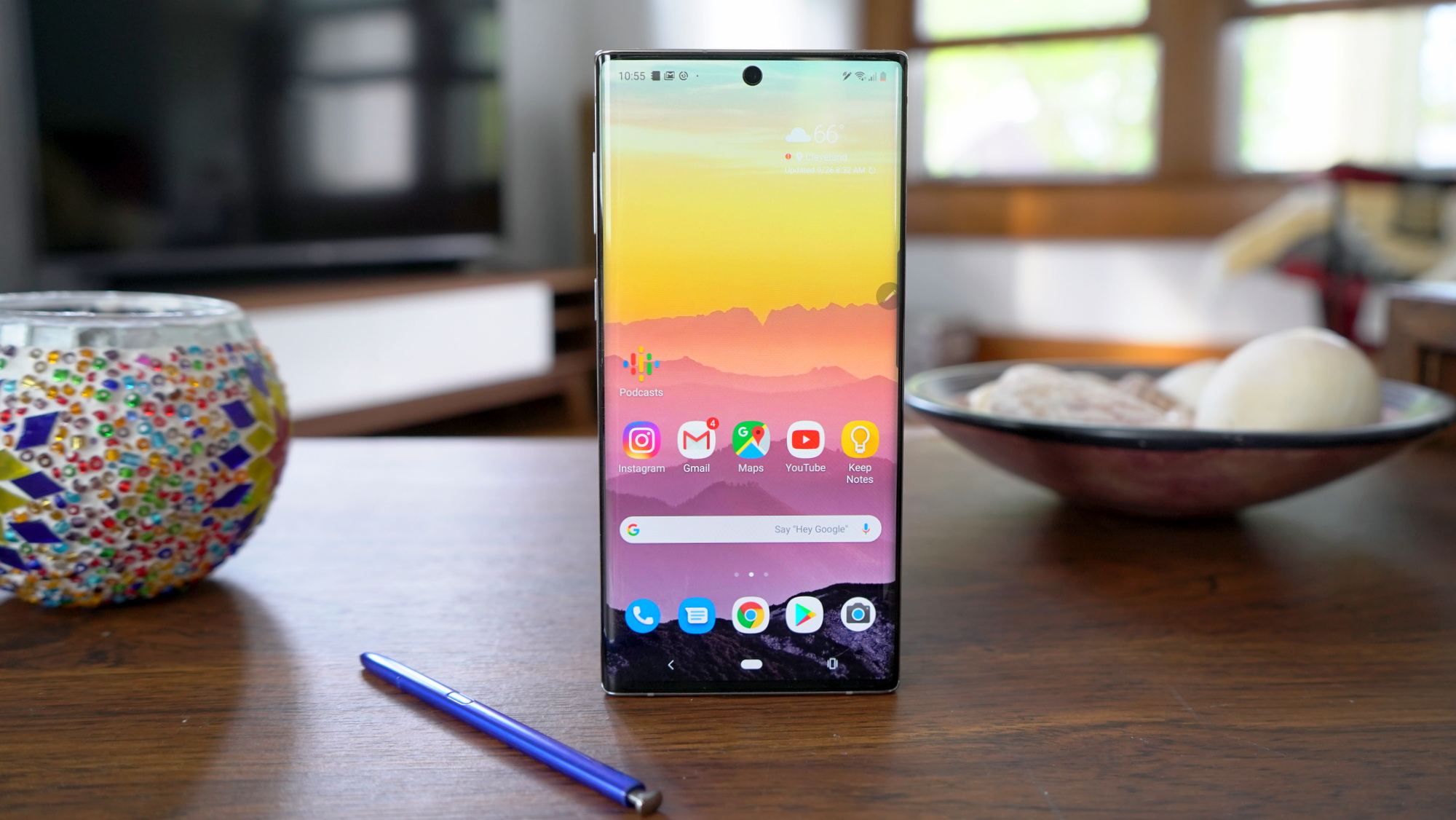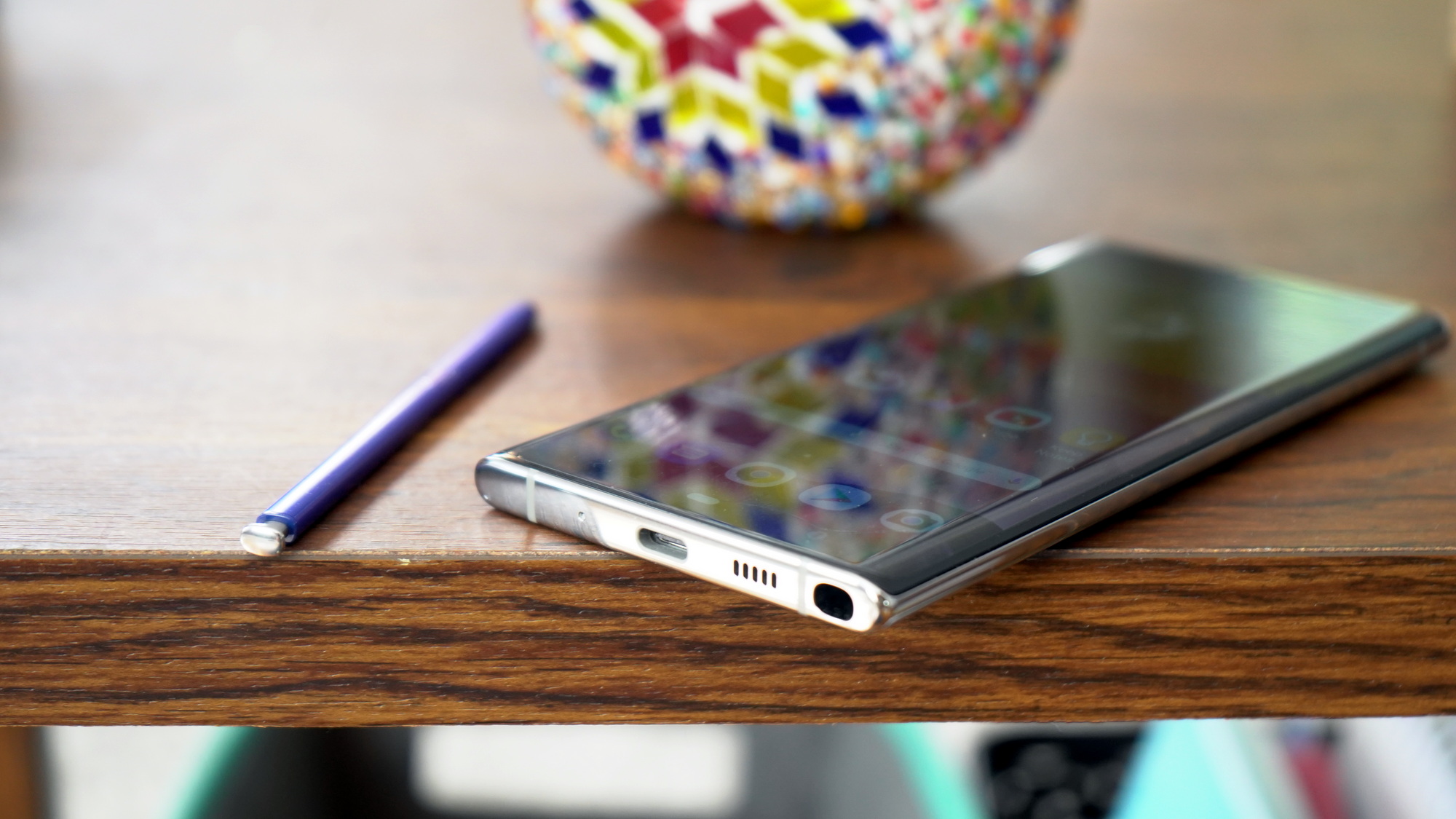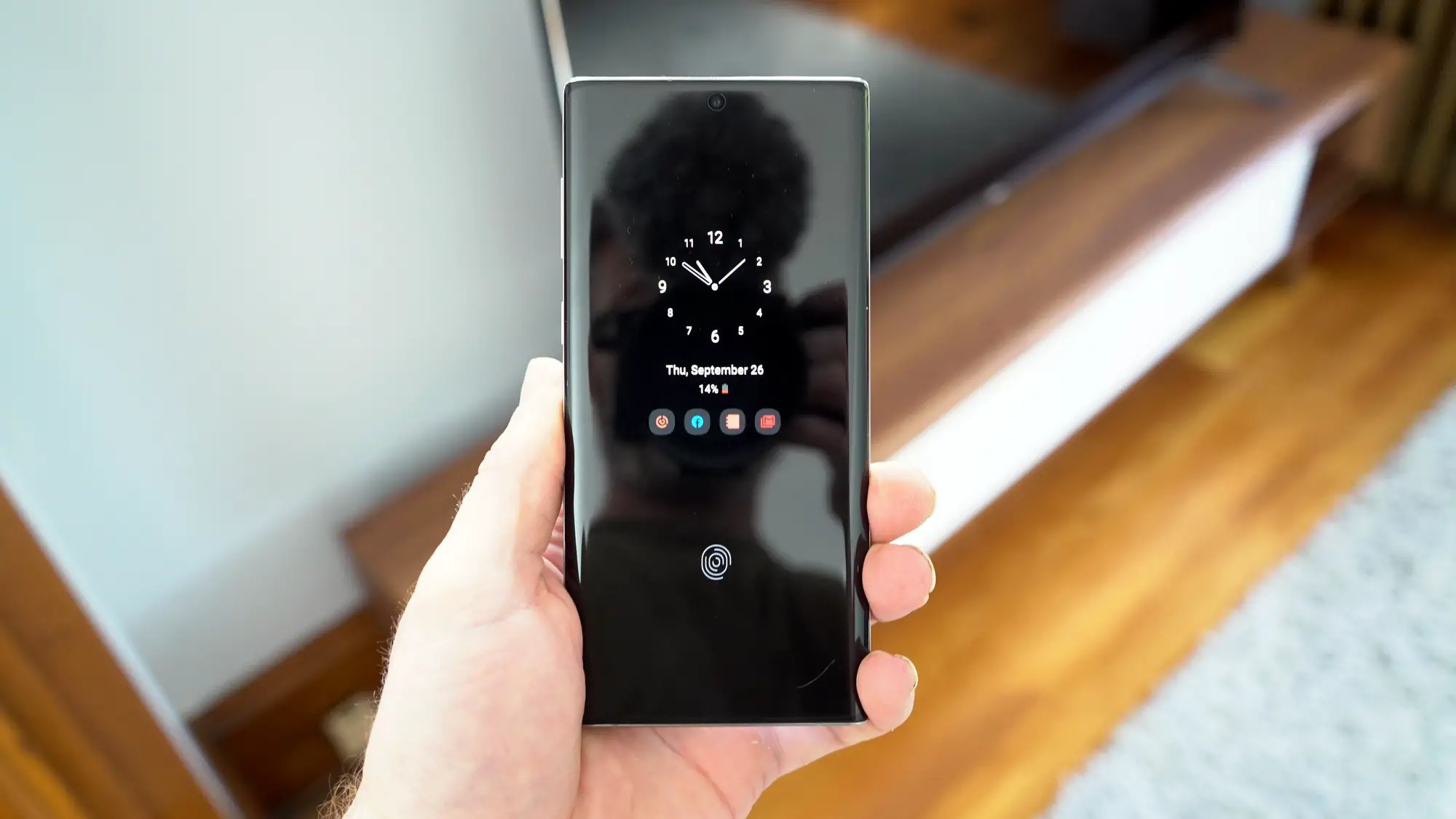If you're looking to a smartphone that has it all, Samsung's Galaxy Note lineup has traditionally been the go-to option for those who don't mind spending top dollar for premium tech. In 2019, the same holds true, but with so many other smartphones encroaching on the Note's territory, it's becoming harder to justify the $950+ sticker price of Samsung's flagship lineup.
This year, users finally get to choose what size Note they want. Samsung has delivered two devices this time: the Note 10 and the Note 10+. Their display sizes are the largest thing setting them apart with a 6.8-inch 3040×1440 panel on the Note 10+ and a 6.3-inch 2280×1080 panel on its smaller sibling. But of course, there are a few other differences as well. The Note 10+ is, of course, bigger and badder with a 4300mAh battery versus 3500mAh of the Note 10. 35W charging quick charging also comes standard versus 25W, and 12GB of RAM compared to the Note 10's 8GB. The addition of a VGA depth sensor on the back of the Note 10+ allows for more accurate AR tracking too.
While the Note series has consistently delivered more than competing devices, Samsung actually cut back on hardware features this time. The heart rate sensor, iris scanner and 3.5mm headphone jack are all missing, along with the notification LED. Dropping the headphone jack was something we were expecting, but there's no excuse for omitting the notification LED. The least Samsung could have done was add a flashing ring around the hole-punch cutout for the front-facing camera, but all you really have is the always-on display which doesn't really show you when your device is done charging or when an important notification comes in.
Design

I'll be the first to admit that Samsung's Note devices have not been the best-looking smartphones these past few years. With the odd placement of the fingerprint sensors and asymmetrical bezels around their displays, the last two versions of the phone have just looked odd. The Note 10 and Note 10+ take a much different approach, delivering a sleek new look which makes the phones look like they're deserving of their high sticker prices.The signature color this year is Aura Glow which can only be described as the rebirth of the CD. Samsung has reproduced the reflective prism effect from the underside of a CD ad slapped it on the back glass of the phone. Yes, it's a fingerprint magnet, but it's definitely the most mesmerizing phone design I've seen in years. The phone features curved side edges, but Samsung has flattened out the top and bottom edges of the phone.One other feature that's been removed is the dedicated Bixby button on the side of the Note 10. You can still easily launch Bixby by log-pressing the power button, but that can be changed in the software if you want. While the Note 10+ is as big as you'd expect it to be, the smaller Note 10 is actually quite small, marking the first time that a Note device has actually reduced its overall footprint, making it the smallest (by volume) Note Samsung has ever built.
- Samsung Galaxy Note10+: 162.3 x 77.2 x 7.9 mm
- Samsung Galaxy Note10: 151 x 71.8 x 7.9 mm
- Samsung Galaxy Note9: 161.9 x 76.4 x 8.8 mm
- Samsung Galaxy Note8: 162.5 x 74.8 x 8.6 mm
- Samsung Galaxy Note7: 153.5 x 73.9 x 7.9 mm
- Samsung Galaxy Note5: 153.2 x 76.1 x 7.6 mm
- Samsung Galaxy Note4: 153.5 x 78.6 x 8.5 mm
- Samsung Galaxy Note3: 151.2 x 79.2 x 8.3 mm
- Samsung Galaxy NoteII: 151.1 x 80.5 x 9.4 mm
- Samsung Galaxy Note: 146.9 x 83 x 9.7 mm
I'm not really a fan of "big" phones and because of this, I've never used a Note for much longer than a few weeks after reviewing one. But the smaller Note 10 is a different story. The phone's sleek design and the versatility of the S Pen make this device the most compelling smartphone of its size.
Specifications
| Samsung Galaxy Note 10+ | Samsung Galaxy Note 10 | |
|---|---|---|
| Price | $1,099 | $949 |
| Screen size | 6.8-inches | 6.3-inch |
| Resolution | 1440 x 3040 | 1080 x 2280 |
| Density | 498 ppi | 401 ppi |
| Processor | Qualcomm Snapdragon 855 | Qualcomm Snapdragon 855 |
| RAM | 12GB | 8GB |
| Storage | 256GB | 256GB |
| Battery | 4,300 mAh | 3,500 mAh |
| OS | Android 9.0 | Android 9.0 |
| Rear camera | Quad-cameras: | Triple-cameras: 12 MP, f/1.5 (standard) 12MP, f/1.5 (telephoto), f/2.1 16MP (ultrawide), f/2.1, fixed-focus 123-degree |
| Front camera | 10MP, f/2.2 | 10MP, f/2.2 |
| Bluetooth | v5.0 | v5.0 |
| NFC | Yes | Yes |
| Dimensions | 162.3 x 77.2 x 7.9 mm | 151 x 71.8 x 7.9mm |
| Weight | 196g | 168g |
| Water Resistance | IP68 | IP68 |
| Wireless Charging | Yes | Yes |
| Special features | In-display Ultrasonic Fingerpring Scanner, reverse wireless charging, 35W fast charging | In-display Ultrasonic Fingerpring Scanner, reverse wireless charging, 25W fast charging |
Performance
By now, you probably have a good handle on what to expect from any device running on Qualcomm's Snapdragon 855. Put simply, it's incredibly fast, power-efficient and powerful enough for the most intense mobile gaming sessions you can throw at it.
The Note 10 may be classified as an inferior device since it features 8GB of RAM as opposed to the 12GB of RAM found in the Note 10+, but that couldn't be further from the truth. The only time you'll notice a difference is in benchmarks, but in the real world, it's impossible to tell the two apart. Samsung should have given buyers the option to upgrade to 12GB of RAM on the smaller Note 10 for those who want to splurge a little, but I don't think anyone will be complaining out this phone's RAM management.
You can easily use two apps at one, jump back into an app that's been frozen in the background for hours or even switch mindlessly between Instagram, Facebook, YouTube and Chome as you search for something new to spark your interest.
Display

Besides the fancy paint job of the back, the first thing you'll notice on this phone is its stunning AMOLED display. Yes, there is a centered hole punch at the top for the front-facing camera, but that allowed Samsung to stretch the display to the very edges of the phone, making it look and feel like something from a sci-fi movie. The panel itself is probably one of the best displays I've ever seen on the smartphone and keep in mind, this is the smaller 6.3-inch 2280×1080 display. The Note 10+'s larger 6.8-inch 3040×1440 panel looks even better. The displays don't have the same 90Hz refresh rate that the Samsung panel on the OnePlus 7 Pro does, but that probably only matters to a select number of buyers.
One of the best displays I've ever seen
It doesn't matter if you're watching movies, playing games or just killing time on social media, the content on the display feels like it's going to jump out and come to life. Viewing angles are phenomenal and it's probably the best screen I've tested this year for visibility in direct sunlight. And the good news is that the AMOLED panel it extremely power efficient, so it won't chew through your battery even when brightness is cranked up to max.
For biometric security, Samsung has embedded an ultrasonic fingerprint sensor embedded below the display. It's decently fast and accurate if you decide to remove the Note 10's pre-installed screen protector, but it'll still be noticeably slower than the optical sensor used on other devices. If you want faster biometric recognition, you can always turn on Face recognition, but it's definitely not as secure.
Cameras

When it comes to its cameras, this phone delivers nearly an identical experience to that of the S10 models from earlier in the year. There are two 12MP sensors paired with a standard 28MM and 58mm telephoto lens and then a 16MP sensor that gives you an incredible 12mm ultra-wide view of the world. The larger Note 10+ does come with an extra Time of Flight (ToF) 3D camera on the back to help with the phone's AR doodles feature. This feels like a waste of hardware since the Note 10 manages just fine without it, in our experience.
Image quality is phenomenal with impeccable detail in daylight and above-average performance once the sun goes down. Samsung's updated Night mode even manages to deliver impressive images which are significantly brighter than what you'd get otherwise, though they still pale in comparison to the Pixel 3.




















Having the versatility offered by the three different focal points is something that can't be understated. While many people love the zoom lens, I find myself capturing ultra-wide shots as often as possible. With that lens, you can capture an entire room, amazing streetscapes or landscape shots which were previously only possible in panorama mode. Of course, the telephoto lens does come in handy from time to time, but for me, it's not the highlight of the show.
The versatility offered by the three focal points is something that can't be understated.
The one thing that I'll say is that the cameras on this phone are consistent and predictable, allowing you to anticipate how the image will turn out before the shot is captured. There are a few times that I was disappointed with the images it captured, but it was honestly wishful thinking that the shots I wanted could be taken with a smartphone instead of a DSLR.
As for the selfie camera that's peeking through the display up front, it does a pretty good job. Despite there being a single sensor, Samsung has included a "wide" feature which honestly should be the only option here. But it can also take live focus shots to blur the background and if you need to capture a late-night selfie or when lighting isn't optimal, the Night mode works here as well.










If you record a lot of video with your phone, that's where you'll notice the real improvements. The new Super Steady setting essentially delivers the stabilization you'd get if the phone was mounted on a gimbal. To do that, it crops in on the video and stabilizes the clip using the phone's internal gyroscope. By default, it switches over to the ultra-wide lens to give you a wider view due to the crop. It's not perfect since the sensor paired with the ultra-wide lens doesn't do as well in low light as the main sensor, but you can always zoom in to switch to the phone's main sensor if you don't mind the crop. Unfortunately, the feature doesn't work with the front-facing camera, something I hope will make the cut in next year's Note 11.
Thankfully the new Live Focus Video mode works with both the front-facing and main cameras, allowing you to capture video of yourself or your friends while adding digital blur or other effects to the background. Yes, it's a bit gimmicky, but it's perfect for when you're wanting to record something a bit more stylized or simply don't want to show the mess in your office.
The final new video feature is audio zoom which enhances the audio recorded from the phone's rear mic as you zoom into a subject. It's a cool feature if you're recording a band or someone talking to the camera that's a bit further away, but not necessarily new since HTC introduced it a few years back on the U11.
Samsung has also beefed up its video editing tools on the phone, giving users a more robust application with dozens of new features for creating videos on the go. Combined with the S Pen, the Note 10 is easily the best smartphone for creators who want to shoot and edit on the same device. That being said, there are plenty of third-party apps on the Play Store which deliver a much better editing experience.
S Pen

Naturally, the S Pen is the one distinguishing feature which, not only gives the phone its name but sets it apart from every other smartphone on the planet. Sure, there are a few other phones with pen support, but no one comes close to delivering what Samsung does.
This year, Samsung has a built-in a gyroscope and accelerometer into the S Pen, allowing it to change camera modes, zoom in and out or switch between the phone's various sensors with different gestures. Honestly, the only reason you'd ever want to use these features is if you're trying to take a selfie with the phone on a tripod. Of course, you can still take a picture by pressing the button on the S Pen and honestly that's still the best feature when it comes to the camera.
The S Pen is by far the most advanced smartphone peripheral on the market
If you're planning to use the S Pen for productivity and getting work done, Samsung has added in advanced Optical Character Recognition (OCR), which allows your written text to be transcribed and saved as a Word document and easily shared with colleagues, thanks to Samsung's new partnership with Microsoft. This may sound like a minor feature upgrade, but it actually makes the S Pen a lot more valuable as a work tool for those who live the corporate life. Of course, you can always use the pen for creating amazing works of art or simply have some fun with the new AR doodles which allow you to sketch on the live camera view while maintaining their position in space while you move around.
The S Pen is by far the most advanced smartphone peripheral on the market. It's what makes the Note unique and compelling when compared to every other smartphone that's out there.
Battery & Charging

While I love the smaller footprint of the regular Note 10, I do wish that the phone has a slightly larger battery. For years, battery life was one of those things that made the Note special. Battery life on the Note 10 is average when compared to other 2019 flagships. The 3500 mAh cell will get you through a typical day and leave you with 25-30%, which may actually be the extra power you might need if you're planning on making it a long one and heading out to dinner or a late-night concert. If battery longevity is a concern, the Note 10+ solves that issue with its 4,300 mAh cell, delivering 3-5 extra hours of life on a charge. But even then, there are plenty of other smartphones that last even longer
Half an hour on the included quick charger will take you from 0 to 60% or just over an hour if you want to go all the way to 100%. If that sounds faster than what Samsung has delivered in the past, that's because they've upped the charge rate to 25w. The Note 10+, on the other hand, supports 35w charging, but you'll have to shell out some extra cash for that since both phones come with the same 25w charger in the box.
Both phones come with wireless charging and the same reverse wireless charging feature that Samsung induced on its S10 series. It's not super fast, but it's a convenient feature if you need to charge your smartwatch, earbuds or your friend's iPhone in a pinch.
Software

I'm not going to touch on the phone's software other to say that Samsung's One UI on Android 9 is identical to the experience offered by the Galaxy S10 series. If you want to know more about that, you can check out our Samsung Galaxy S10+ review.
The one minor difference is the inclusion of a new DEX feature which allows you to plug the phone into your computer rather than a standalone monitor. Users can drag and drop files between your phone and computer, play games, send messages and even answer phone calls. The experience is a bit laggier than if you were to plug the Note 10 directly into a monitor with a keyboard and mouse, but it's definitely a lot more practical. And thanks to Samsung's new partnership with Microsoft, users will be able to wirelessly sync notifications and photos between the phone and a Windows 10 device without having to install any additional software.
Final Thoughts
The Samsung Galaxy Note 10 and Note 10+ are the best Android smartphones Samsung has ever built and beat out what the competition has been throwing at it in 2019. But for as much praise as these phones deserve, I'm honestly a bit disappointed. The Note series used to be all about innovation and testing new ideas. That didn't really happen this time around. You're looking at an iterative upgrade, combining the best of last year's Note 9 with the new features Samsung introduces on the S10 series. It's an incredible piece of hardware, but it somehow lacks that bit of magic which gave the Note its signature status for so many years.
Samsung Galaxy Note 10 Rating: star_fullstar_fullstar_fullstar_fullstar_50 (4.5/5)
The Good
- S Pen features
- Amazing display
- Great software
- Good camera performance
The Bad
- Average battery life
- Slow-ish fingerprint sensor
The Bottom Line
If you're willing to drop $950 on the smaller Note 10 or $150 more for the Note 10+, you'll probably not be disappointed. That being said, there are plenty of other options out there which offer larger displays, bigger batteries, and cameras which are nearly as good as the Note 10's for $200-$300 less.
Personally, I'm all about saving money and finding the best deal possible when it comes to smartphones, but there's just something special about the smaller Note 10 that will keep this phone as my daily driver longer than I would have expected.
from Phandroid https://ift.tt/2mbskVu
via IFTTT
No comments:
Post a Comment